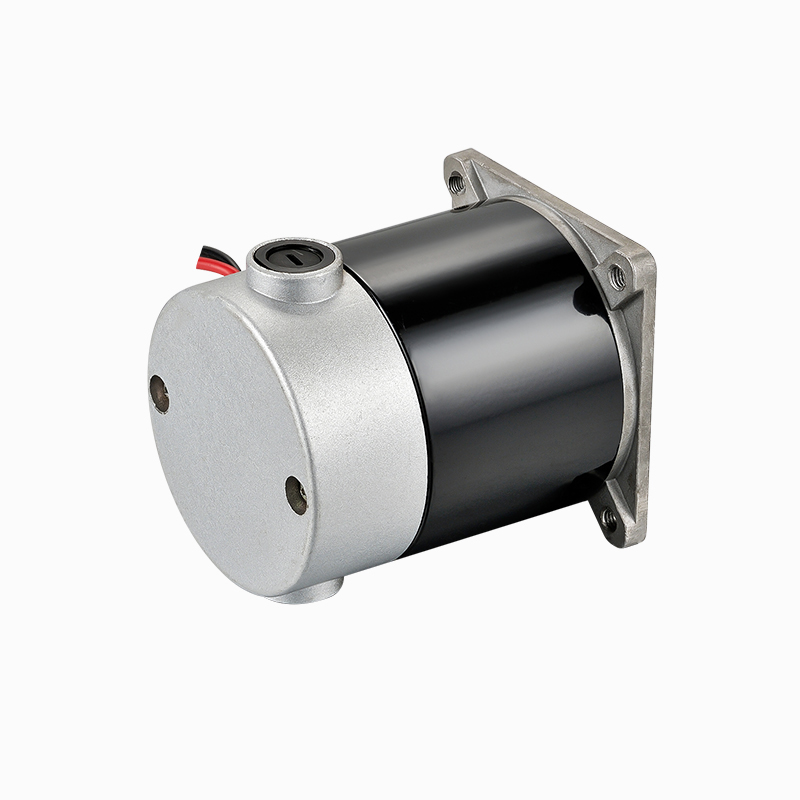Call us
+86-18023576732
+86-0579-89008006
Fax: +86-0579-82206899
Permanent Magnet DC Motor technology is widely recognized for its precise control, high torque, and compact design, making it ideal for variable speed and adjustable load applications. Variable speed operation allows systems to adapt to changing performance requirements, improving energy efficiency and system responsiveness. However, achieving high efficiency across a wide range of speeds requires careful consideration of electrical, mechanical, and thermal characteristics. Understanding how a Permanent Magnet DC Motor performs under variable speed conditions is critical for designing reliable and energy-efficient systems.

Permanent Magnet DC Motors maintain efficiency advantages over many conventional motor types because their permanent magnets generate the required magnetic field without continuous electrical excitation. This eliminates excitation losses and contributes to high efficiency, especially at rated speed and load. The inherent design allows smooth torque generation, making the motor suitable for both low-speed precision control and high-speed operation. When integrated with appropriate controllers, the motor can achieve accurate and responsive speed adjustments while maintaining reasonable efficiency levels across a broad range of operating conditions.
At low speeds, Permanent Magnet DC Motors tend to operate with reduced copper losses due to lower current draw, but fixed mechanical and core losses become more significant in proportion to output power. These losses can slightly reduce efficiency compared to operation near rated speed. Despite this, the motor still provides better efficiency than traditional series-wound or shunt-wound motors in similar conditions. Using optimized control techniques, such as pulse-width modulation (PWM), can further enhance efficiency during low-speed operation by precisely regulating voltage and current to match torque requirements.
Efficiency typically peaks near the rated speed, where the motor is designed to balance electrical and mechanical losses effectively. At this point, copper, iron, and friction losses are proportionally optimized relative to output power. In variable speed applications, maintaining operation close to rated load during average duty cycles improves energy conversion efficiency while reducing thermal stress. Properly selected controllers and feedback mechanisms ensure that the motor remains within its efficient operating region for the majority of usage scenarios.
At higher speeds, additional considerations arise, including increased iron losses due to higher flux variations and potential mechanical losses from bearings and air resistance. Nevertheless, Permanent Magnet DC Motors can maintain high efficiency at elevated speeds with proper design and cooling. Controllers can adjust voltage and current dynamically to compensate for increased losses, preserving efficiency and protecting the motor from overheating. Active thermal management and well-designed mechanical structures are essential for sustaining performance under prolonged high-speed operation.
Modern electronic controllers play a critical role in maintaining efficiency across variable speeds. Techniques such as PWM, torque limiting, and closed-loop feedback ensure that the motor operates with losses while delivering the required performance. By adjusting voltage and current in real time, the system can prevent unnecessary energy waste and thermal buildup. Combining high-quality materials, optimized winding design, and effective control algorithms enables the motor to achieve consistent efficiency in dynamic applications.
Permanent Magnet DC Motors can operate efficiently in variable speed and adjustable load applications due to their low excitation losses, precise torque control, and adaptability to modern control strategies. Efficiency may vary slightly at low or high speeds, but proper motor design, cooling, and control techniques ensure reliable and energy-efficient operation. These characteristics make Permanent Magnet DC Motors particularly well-suited for applications demanding both speed flexibility and sustained performance, highlighting their advantages in modern engineering systems.
Contact Us